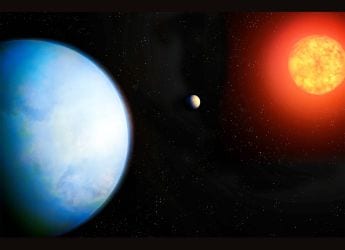- Home
- Mobiles
- Mobiles News
- Swipe Konnect 5.0 With 5 inch Display, Quad Core Processor Launched at Rs. 8,999
Swipe Konnect 5.0 With 5-inch Display, Quad-Core Processor Launched at Rs. 8,999

The dual-SIM Swipe Konnect 5.0 runs at Android 4.2 Jelly Bean out-of-the-box and has a 5-inch (540x960 pixels) qHD IPS display with One Glass Solution (OGS) technology.
The Konnect 5.0 features a 1.3GHz quad-core processor (unknown chipset) clubbed with 1GB of RAM. It comes with an 8-megapixel rear camera with LED flash and a 3.2-megapixel front facing secondary camera. Built-in memory on the device is a generous 8GB which can be further expanded up to 32GB with a microSD card.
Connectivity options on the Swipe Konnect 5.0 include 3G, Wi-Fi 802.11 b/g/n, Bluetooth 4.0, FM radio and GPS. Konnect 5.0 smartphone packs in a 1950mAh polymer-ion battery. It measures 148x74x8.9mm and weighs 135 grams. The smartphone comes with a free screen guard, flip cover and premium business navigator worth Rs. 1,499.
Commenting on the launch of Konnect series, Mr. Shripal Gandhi, Founder & CEO, Swipe, said, "Swipe has always been ahead of the curve in terms of features offerings in Smartphone phablets. We will cement our position as innovative maker of smart phablets with the launch of the Konnect 5.0. "
Swipe Telecom, headquartered in Palo Alto California, recently received a funding of Rs. 30 crore from Kalaari capital. The company also has plans to roll out 10 new devices under the Konnect series by the next quarter.
"The recent venture capital funding from Kalaari Capital has helped the company in developing innovative features and its reach in the Indian market. Swipe raised Rs. 30 crore in venture capital funding from Kalaari Capital in April this year" added Mr. Gandhi.Mobiles launched in June 2014
Get your daily dose of tech news, reviews, and insights, in under 80 characters on Gadgets 360 Turbo. Connect with fellow tech lovers on our Forum. Follow us on X, Facebook, WhatsApp, Threads and Google News for instant updates. Catch all the action on our YouTube channel.
Related Stories
- Samsung Galaxy Unpacked 2025
- ChatGPT
- Redmi Note 14 Pro+
- iPhone 16
- Apple Vision Pro
- Oneplus 12
- OnePlus Nord CE 3 Lite 5G
- iPhone 13
- Xiaomi 14 Pro
- Oppo Find N3
- Tecno Spark Go (2023)
- Realme V30
- Best Phones Under 25000
- Samsung Galaxy S24 Series
- Cryptocurrency
- iQoo 12
- Samsung Galaxy S24 Ultra
- Giottus
- Samsung Galaxy Z Flip 5
- Apple 'Scary Fast'
- Housefull 5
- GoPro Hero 12 Black Review
- Invincible Season 2
- JioGlass
- HD Ready TV
- Laptop Under 50000
- Smartwatch Under 10000
- Latest Mobile Phones
- Compare Phones
- Vivo Y500 Pro
- Realme GT 8 Pro Aston Martin F1 Limited Edition
- Huawei Mate 70 Air
- Moto G57
- Moto G57 Power
- Motorola Edge 70
- Moto G Play (2026)
- Moto G (2026)
- MacBook Pro 14-inch (M5, 2025)
- Asus Vivobook S16 (S3607QA)
- iQOO Pad 5e
- OPPO Pad 5
- Noise Diva 2
- Noise Halo 2
- Acerpure Nitro Z Series 100-inch QLED TV
- Samsung 43 Inch LED Ultra HD (4K) Smart TV (UA43UE81AFULXL)
- Asus ROG Ally
- Nintendo Switch Lite
- Haier 1.6 Ton 5 Star Inverter Split AC (HSU19G-MZAID5BN-INV)
- Haier 1.6 Ton 5 Star Inverter Split AC (HSU19G-MZAIM5BN-INV)


















